34 results
1st grade statistics movie guides for staff

Crash Course Statistics Bundle 1-10 Questions & Key
Host Adriene HillWelcome to Crash Course Statistics! In this series we're going to take a closer look at how statistics play a significant role in our everyday lives. Now this a "math" course, and there will definitely be some math, but we're going to focus on how statistics is useful and valuable to you - someone that performs AND consumes statistics all the time. Statistics are everywhere from batting averages and insurance rates to weather forecasting and smart assistants, and it's our hope t
Subjects:
Grades:
10th - 12th, Higher Education, Adult Education, Staff
Types:
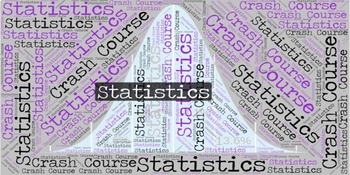
Crash Course Statistics Bundle 11-20 Questions & Key
Host Adriene HillWelcome to Crash Course Statistics! In this series we're going to take a closer look at how statistics play a significant role in our everyday lives. Now this a "math" course, and there will definitely be some math, but we're going to focus on how statistics is useful and valuable to you - someone that performs AND consumes statistics all the time. Statistics are everywhere from batting averages and insurance rates to weather forecasting and smart assistants, and it's our hope t
Subjects:
Grades:
10th - 12th, Higher Education, Adult Education, Staff
Types:
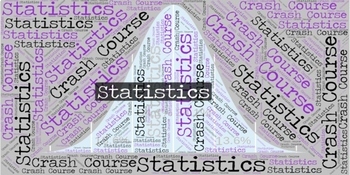
Crash Course Statistics Bundle 1-5 Questions & Key
Host Adriene HillWelcome to Crash Course Statistics! In this series we're going to take a closer look at how statistics play a significant role in our everyday lives. Now this a "math" course, and there will definitely be some math, but we're going to focus on how statistics is useful and valuable to you - someone that performs AND consumes statistics all the time. Statistics are everywhere from batting averages and insurance rates to weather forecasting and smart assistants, and it's our hope t
Subjects:
Grades:
10th - 12th, Higher Education, Adult Education, Staff
Types:
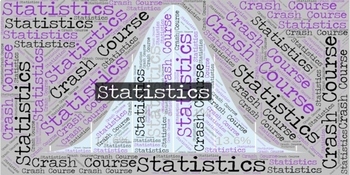
Crash Course Statistics # 8 Correlation Doesn’t Equal Causation Questions & Key
Correlation Doesn’t Equal Causation: Crash Course Statistics #8Host Adriene HillToday we’re going to talk about data relationships and what we can learn from them. We’ll focus on correlation, which is a measure of how two variables move together, and we’ll also introduce some useful statistical terms you’ve probably heard of like regression coefficient, correlation coefficient (r), and r^2. But first, we’ll need to introduce a useful way to represent bivariate continuous data - the scatter
Subjects:
Grades:
10th - 12th, Higher Education, Adult Education, Staff
Types:
Also included in: Crash Course Statistics Bundle 6-10 Questions & Key

Crash Course Statistics Bundle 21-25 Distance Learning Questions & Key
Host Adriene HillCrash Course Statistics PlaylistWelcome to Crash Course Statistics! In this series we're going to take a closer look at how statistics play a significant role in our everyday lives. Now this a "math" course, and there will definitely be some math, but we're going to focus on how statistics is useful and valuable to you - someone that performs AND consumes statistics all the time. Statistics are everywhere from batting averages and insurance rates to weather forecasting and smart
Subjects:
Grades:
10th - 12th, Higher Education, Adult Education, Staff
Types:
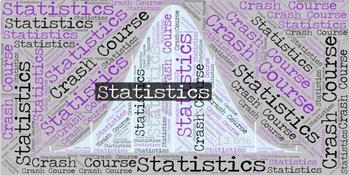
Crash Course Statistics # 4 Measures of Spread Questions & Key
Measures of Spread: Crash Course Statistics #4Host Adriene HillToday, we're looking at measures of spread, or dispersion, which we use to understand how well medians and means represent the data, and how reliable our conclusions are. They can help understand test scores, income inequality, spot stock bubbles, and plan gambling junkets. They're pretty useful, and now you're going to know how to calculate them! (Crash Course Synopsis 11:22)Fill in the blank questions with answer keyIn-Class and
Subjects:
Grades:
10th - 12th, Higher Education, Adult Education, Staff
Types:
Also included in: Crash Course Statistics Bundle 1-5 Questions & Key
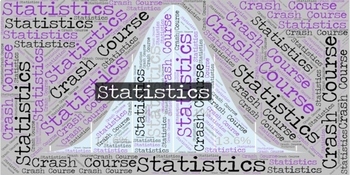
Crash Course Statistics # 7 The Shape of Data: Distributions Questions & Key
Host Adriene HillWhen collecting data to make observations about the world it usually just isn't possible to collect ALL THE DATA. So instead of asking every single person about student loan debt for instance we take a sample of the population, and then use the shape of our samples to make inferences about the true underlying distribution our data. It turns out we can learn a lot about how something occurs, even if we don't know the underlying process that causes it. Today, we’ll also introduce
Subjects:
Grades:
10th - 12th, Higher Education, Adult Education, Staff
Types:
Also included in: Crash Course Statistics Bundle 6-10 Questions & Key
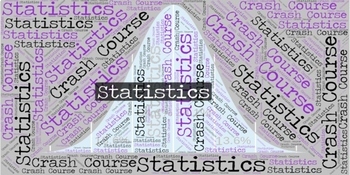
Crash Course Statistics # 12 Ethical Data Collection Q & Key
Henrietta Lacks, the Tuskegee Experiment, and Ethical Data Collection: Crash Course Statistics #12Host Adriene HillToday we’re going to talk about ethical data collection. From the Tuskegee syphilis experiments and Henrietta Lacks’ HeLa cells to the horrifying experiments performed at Nazi concentration camps, many strides have been made from Institutional Review Boards (or IRBs) to the Nuremberg Code to guarantee voluntariness, informed consent, and beneficence in modern statistical gather
Subjects:
Grades:
10th - 12th, Higher Education, Adult Education, Staff
Types:
Also included in: Crash Course Statistics Bundle 11-15 Questions & Key

Crash Course Statistics # 18 Z-Scores and Percentiles Q & Key
Z-Scores and Percentiles: Crash Course Statistics #18Host Adriene HillToday we’re going to talk about how we compare things that aren’t exactly the same - or aren’t measured in the same way. For example, if you wanted to know if a 1200 on the SAT is better than the 25 on the ACT. For this, we need to standardize our data using z-scores - which allow us to make comparisons between two sets of data as long as they’re normally distributed. We’ll also talk about converting these scores to perc
Subjects:
Grades:
10th - 12th, Higher Education, Adult Education, Staff
Types:
Also included in: Crash Course Statistics Bundle 16-20 Questions & Key

Crash Course Statistics # 5 Data Visualization Part 1 Questions & Key
Charts Are Like Pasta - Data Visualization Part 1: Crash Course Statistics #5Host Adriene HillToday we're going to start our two-part unit on data visualization. Up to this point we've discussed raw data - which are just numbers - but usually it's much more useful to represent this information with charts and graphs. There are two types of data we encounter, categorical and quantitative data, and they likewise require different types of visualizations. Today we'll focus on bar charts, pie charts
Subjects:
Grades:
10th - 12th, Higher Education, Adult Education, Staff
Types:
Also included in: Crash Course Statistics Bundle 1-5 Questions & Key

Crash Course Statistics # 6 Data Visualization Part 2 Questions & Key
Plots, Outliers, and Justin Timberlake: Data Visualization Part 2: Crash Course Statistics #6Host Adriene HillToday we’re going to finish up our unit on data visualization by taking a closer look at how dot plots, box plots, and stem and leaf plots represent data. We’ll also talk about the rules we can use to identify outliers and apply our new data viz skills by taking a closer look at how Justin Timberlake’s song lyrics have changed since he went solo. (Crash Course Synopsis 11:35)Fill in the
Subjects:
Grades:
10th - 12th, Higher Education, Adult Education, Staff
Types:
Also included in: Crash Course Statistics Bundle 6-10 Questions & Key
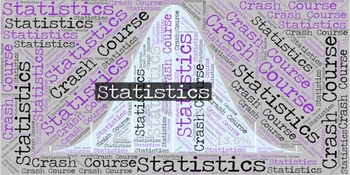
Crash Course Statistics # 1 What is Statistics Questions & Key
What Is Statistics: Crash Course Statistics #1Host Adriene HillWelcome to Crash Course Statistics! In this series we're going to take a look at the important role statistics play in our everyday lives, because statistics are everywhere! Statistics help us better understand the world and make decisions from what you'll wear tomorrow to government policy. But in the wrong hands, statistics can be used to misinform. So we're going to try to do two things in this series. Help show you the usefulness
Subjects:
Grades:
10th - 12th, Higher Education, Adult Education, Staff
Types:
Also included in: Crash Course Statistics Bundle 1-5 Questions & Key

Crash Course Statistics # 3 Measures of Central Tendency Questions & Key
Host Adriene Hill
Mean, Median, and Mode: Measures of Central Tendency
Today we’re going to talk about measures of central tendency - those are the numbers that tend to hang out in the middle of our data: the mean, the median, and mode. All of these numbers can be called “averages” and they’re the numbers we tend to see most often - whether it’s in politics when talking about polling or income equality to batting averages in baseball (and cricket) and Amazon reviews. Averages are everywhere so
Subjects:
Grades:
10th - 12th, Higher Education, Adult Education, Staff
Types:
Also included in: Crash Course Statistics Bundle 1-5 Questions & Key

Crash Course Statistics # 11 Science Journalism Q & Key
Science Journalism: Crash Course Statistics #11Host Adriene HillWe’ve talked a lot in this series about how often you see data and statistics in the news and on social media - which is ALL THE TIME! But how do you know who and what you can trust? Today, we’re going to talk about how we, as consumers, can spot flawed studies, sensationalized articles, and just plain poor reporting. And this isn’t to say that all science articles you read on facebook or in magazines are wrong, but that it's
Subjects:
Grades:
10th - 12th, Higher Education, Adult Education, Staff
Types:
Also included in: Crash Course Statistics Bundle 11-15 Questions & Key

Crash Course Statistics # 10 Sampling Methods and Bias with Surveys Q & Key
Sampling Methods and Bias with Surveys: Crash Course Statistics #10Host Adriene Hill Today we’re going to talk about good and bad surveys. From user feedback surveys, telephone polls, and those questionnaires at your doctors office, surveys are everywhere, but with their ease to create and distribute, they're also susceptible to bias and error. So today we’re going to talk about how to identify good and bad survey questions, and how groups (or samples) are selected to represent the entire p
Subjects:
Grades:
10th - 12th, Higher Education, Adult Education, Staff
Types:
Also included in: Crash Course Statistics Bundle 6-10 Questions & Key
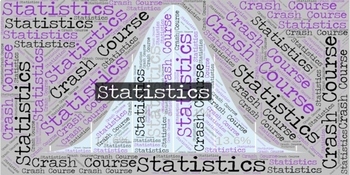
Crash Course Statistics Bundle 16-20 Questions & Key
Host Adriene HillWelcome to Crash Course Statistics! In this series we're going to take a closer look at how statistics play a significant role in our everyday lives. Now this a "math" course, and there will definitely be some math, but we're going to focus on how statistics is useful and valuable to you - someone that performs AND consumes statistics all the time. Statistics are everywhere from batting averages and insurance rates to weather forecasting and smart assistants, and it's our hope t
Subjects:
Grades:
10th - 12th, Higher Education, Adult Education, Staff
Types:

Crash Course Statistics Bundle 11-15 Questions & Key
Host Adriene HillWelcome to Crash Course Statistics! In this series we're going to take a closer look at how statistics play a significant role in our everyday lives. Now this a "math" course, and there will definitely be some math, but we're going to focus on how statistics is useful and valuable to you - someone that performs AND consumes statistics all the time. Statistics are everywhere from batting averages and insurance rates to weather forecasting and smart assistants, and it's our hope t
Subjects:
Grades:
10th - 12th, Higher Education, Adult Education, Staff
Types:
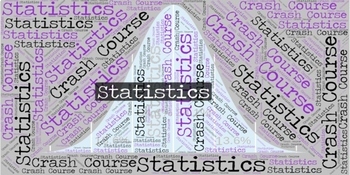
Crash Course Statistics Bundle 6-10 Questions & Key
Host Adriene HillWelcome to Crash Course Statistics! In this series we're going to take a closer look at how statistics play a significant role in our everyday lives. Now this a "math" course, and there will definitely be some math, but we're going to focus on how statistics is useful and valuable to you - someone that performs AND consumes statistics all the time. Statistics are everywhere from batting averages and insurance rates to weather forecasting and smart assistants, and it's our hope t
Subjects:
Grades:
10th - 12th, Higher Education, Adult Education, Staff
Types:
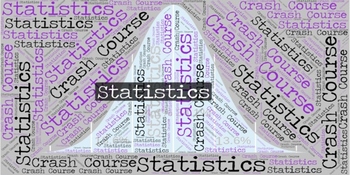
Crash Course Statistics #2 Mathematical Thinking Questions & Key
Mathematical Thinking: Crash Course Statistics #2Host Adriene HillToday we’re going to talk about numeracy - that is understanding numbers. From really really big numbers to really small numbers, it's difficult to comprehend information at this scale, but these are often the types of numbers we see most in statistics. So understanding how these numbers work, how to best visualize them, and how they affect our world can help us become better decision makers - from deciding if we should really wor
Subjects:
Grades:
10th - 12th, Higher Education, Adult Education, Staff
Types:
Also included in: Crash Course Statistics Bundle 1-5 Questions & Key

Crash Course Statistics # 27 T-Tests Q & A Key - Distance Learning
Host Adriene HillCrash Course Statistics PlaylistCC Statistics 27 T-TestsToday we're going to walk through a couple of statistical approaches to answer the question: "is coffee from the local cafe, Caf-fiend, better than that other cafe, The Blend Den?" We'll build a two sample t-test which will tell us how many standard errors away from the mean our observed difference is in our tasting experiment, and then we'll introduce a matched pair t-tests which allow us to remove variation in the experim
Subjects:
Grades:
10th - 12th, Higher Education, Adult Education, Staff
Types:
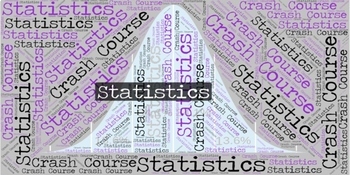
Crash Course Statistics # 24 Bayes Q & A Key - Distance Learning
Host Adriene HillCC Statistics #24 BayesCrash Course Statistics PlaylistToday we’re going to talk about Bayes Theorem and Bayesian hypothesis testing. Bayesian methods like these are different from how we've been approaching statistics so far, because they allow us to update our beliefs as we gather new information - which is how we tend to think naturally about the world. And this can be a really powerful tool, since it allows us to incorporate both scientifically rigorous data AND our previous
Subjects:
Grades:
10th - 12th, Higher Education, Adult Education, Staff
Types:
Also included in: Crash Course Statistics Bundle 21-25 Distance Learning Questions & Key

Crash Course Statistics # 22 P-Value Problems Distance Learning Q & Key
Host Adriene HillCrash Course Statistics 22Crash Course Statistics PlaylistLast week we introduced p-values as a way to set a predetermined cutoff when testing if something seems unusual enough to reject our null hypothesis - that they are the same. But today we’re going to discuss some problems with the logic of p-values, how they are commonly misinterpreted, how p-values don’t give us exactly what we want to know, and how that cutoff is arbitrary - and arguably not stringent enough in some sce
Subjects:
Grades:
10th - 12th, Higher Education, Adult Education, Staff
Types:
Also included in: Crash Course Statistics Bundle 21-25 Distance Learning Questions & Key
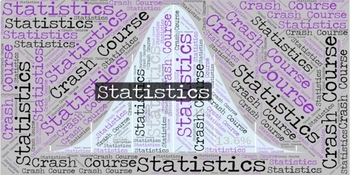
Crash Course Statistics # 17 Randomness Q & Key
Randomness: Crash Course Statistics #17Host Adriene HillThere are a lot of events in life that we just can’t predict, but just because something is random doesn’t mean we don’t know or can’t learn anything about it. Today, we’re going to talk about how we can extract information from seemingly random events starting with the expected value or mean of a distribution and walking through the first four “moments” - the mean, variance, skewness, and kurtosis. (Crash Course Synopsis 12:06)Fill i
Subjects:
Grades:
10th - 12th, Higher Education, Adult Education, Staff
Types:
Also included in: Crash Course Statistics Bundle 16-20 Questions & Key
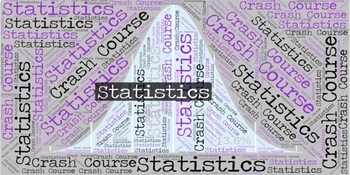
Crash Course Statistics # 13 Probability Part 1: Rules and Patterns Q & Key
Probability Part 1: Rules and Patterns: Crash Course Statistics #13Host Adriene HillToday we’re going to begin our discussion of probability. We’ll talk about how the addition (OR) rule, the multiplication (AND) rule, and conditional probabilities help us figure out the likelihood of sequences of events happening - from optimizing your chances of having a great night out with friends to seeing Cole Sprouse at IHop! (Crash Course Synopsis 12:00)Fill in the blank questions with answer keyIn-C
Subjects:
Grades:
10th - 12th, Higher Education, Adult Education, Staff
Types:
Also included in: Crash Course Statistics Bundle 11-15 Questions & Key
Showing 1-24 of 34 results





